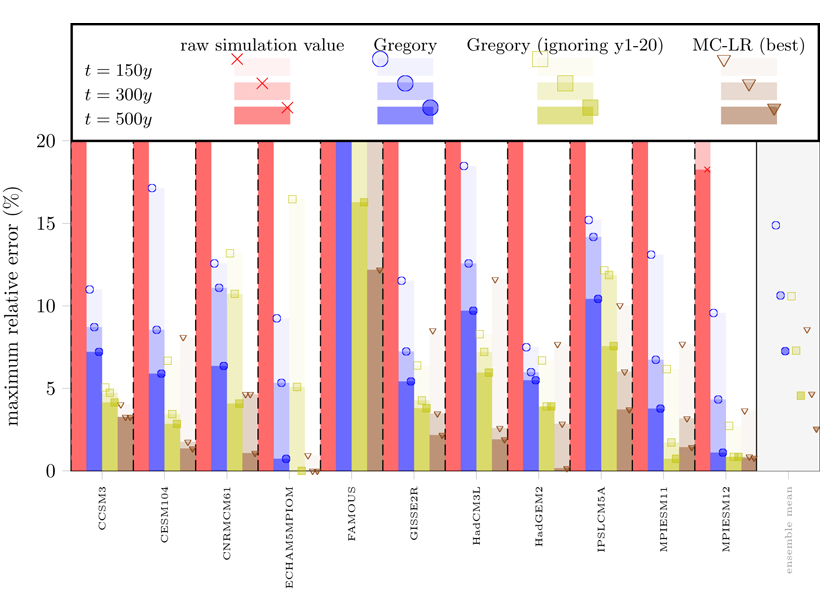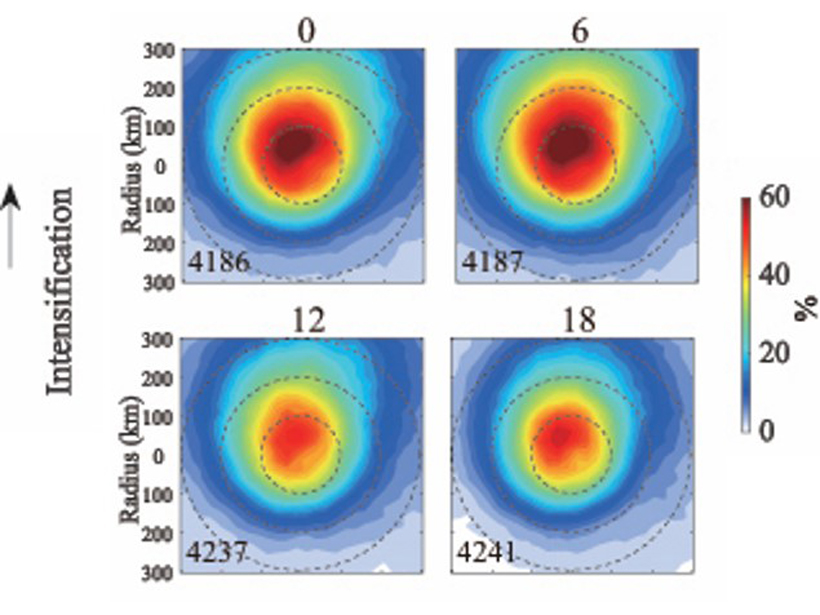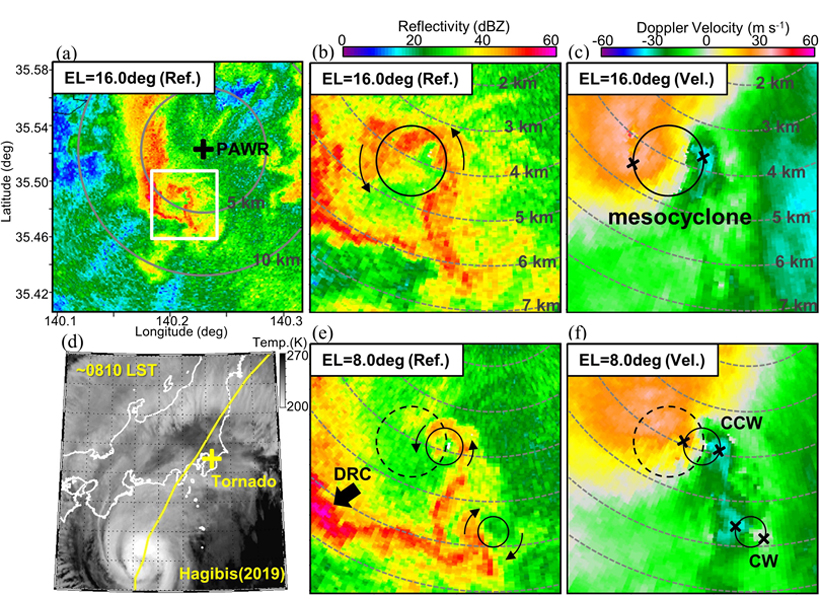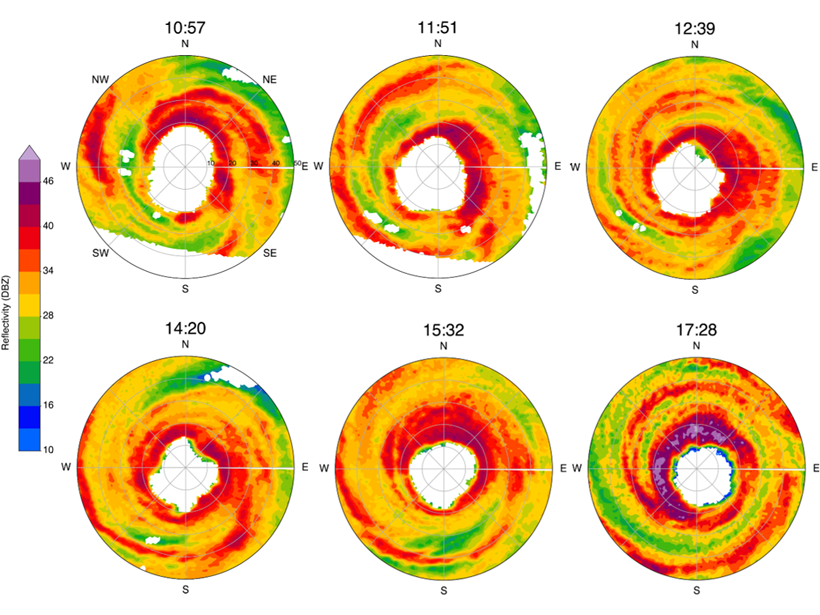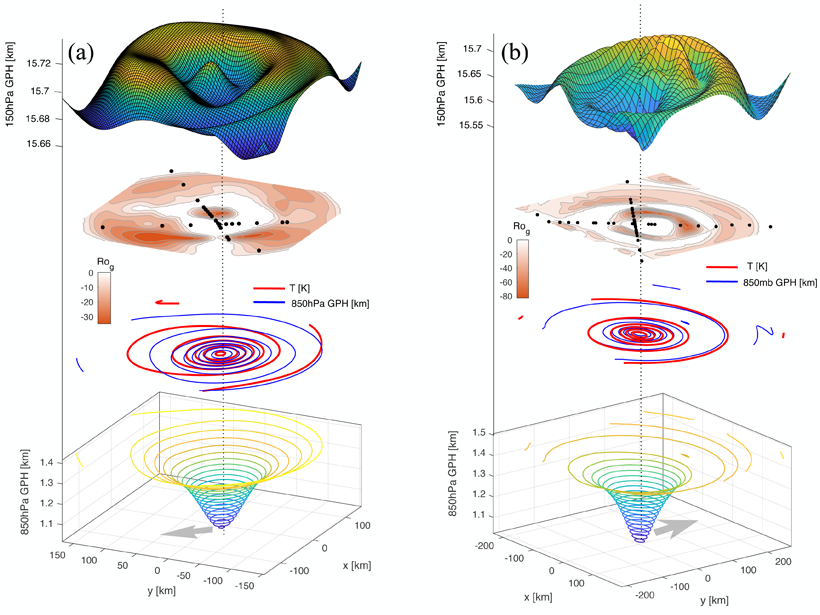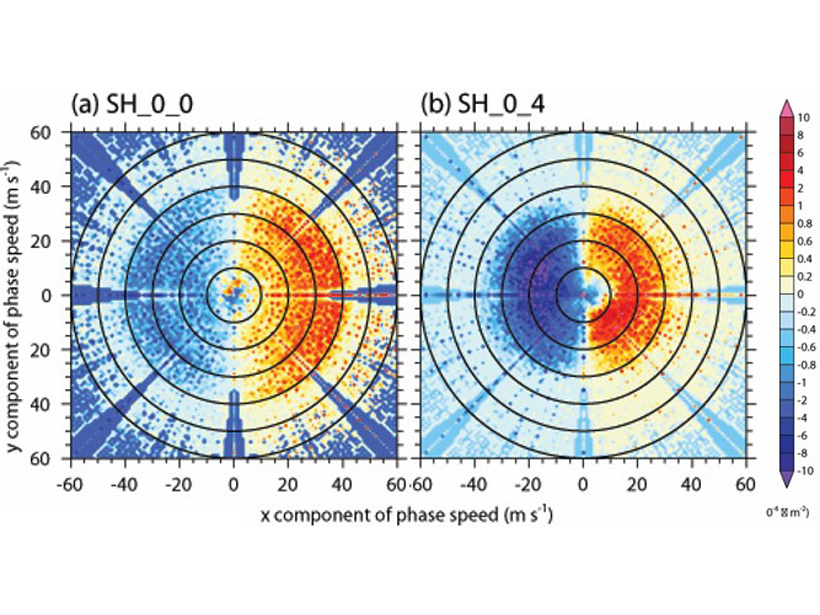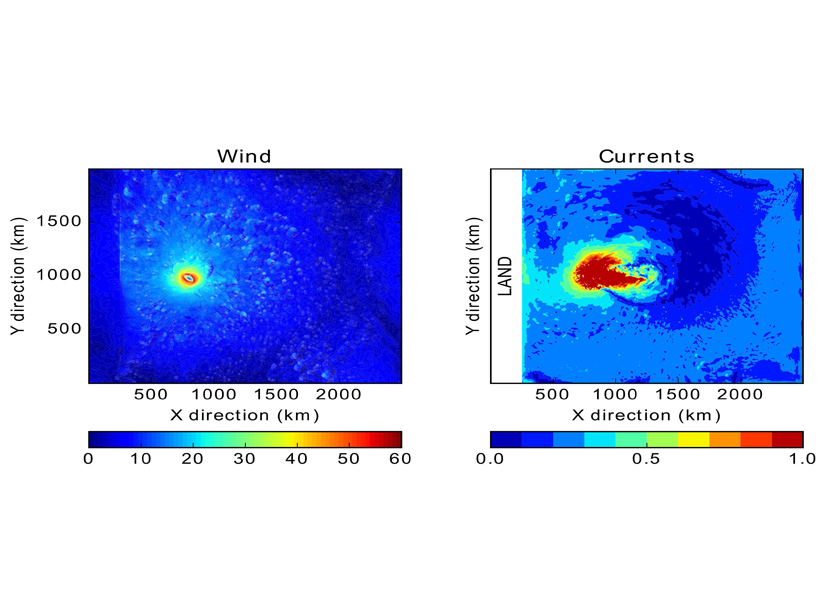Climate sensitivity can be estimated using multiple variables jointly in a multi-component linear regression.
Suzana Camargo
Editor, Geophysical Research Letters
How Tropical Cyclones Increase in Intensity Overnight
The diurnal variations of tropical cyclone intensification and decay are analyzed using satellite data for deep convective clouds.
Post-Tropical Cyclones Influence on European Windstorm Risk
Comparing the importance of midlatitude cyclones and post-tropical cyclones on European windstorms during the Atlantic hurricane season using ERA-5 reanalysis.
Radar Observations of a Tornado Associated with Typhoon Hagibis
Analysis of tornadogenesis processes on a shallow supercell associated with Typhoon Hagibis using finely resolved rapid-scan radar observations at a very close range.
The Evolution of Observed Hurricane Eyewall Shapes
The observational evidence of the wind field of Hurricane Michael using radar imagery showed an eyewall structure evolution with elliptical, triangular, and square shapes for the first time.
How Does Convection Work Over the Tropics?
A new conceptual framework on how convection works in the tropics helps advance understanding of the contrast between land and ocean and how the tropics will respond to climate change.
Understanding Tropical Rainfall Projections Under Climate Change
A new mechanism explains changes in the probability distribution of tropical rainfall, which is not expected to change uniformly in a warming climate.
Examining the Structure of Tropical Cyclones’ Upper Levels
Unique observations used to examine the structure and mass balance of hurricanes’ top levels find that regions of high pressure violate the gradient wind balance.
Vertical Shear and Tropical Cyclone Generated Gravity Waves
How does vertical wind shear impact the characteristics of gravity waves generated by tropical cyclones?
Can Coastal Surface Currents Improve Hurricane Forecasts?
An idealized model explores whether hurricane intensity forecasts could potentially be improved by incorporating coastal surface currents data.

